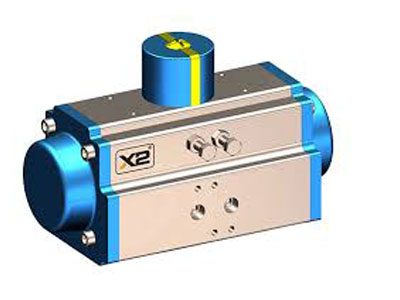Key Takeaway
The principle of a rotary actuator involves converting energy into rotational motion, providing precise control and high torque output. Understanding this principle is crucial for selecting the right actuator for your needs.
Consider factors such as torque, speed, and environment when selecting a rotary actuator. Proper selection ensures efficient and reliable operation, enhancing productivity and reliability.
Basic Mechanics of Rotary Actuation
The basic mechanics of rotary actuation involve converting energy into rotational motion, typically through a mechanism that uses fluid pressure or electric power. In pneumatic rotary actuators, compressed air enters the actuator and applies force to a vane or piston, which then rotates around a central axis. This rotational force is transmitted to the output shaft, where it can be used to turn or move mechanical components. The design of the actuator determines the amount of torque and speed that can be generated by the system, and it is essential for the actuator to provide controlled, reliable motion.
Rotary actuators can vary in complexity depending on their application. Some actuators may have simple designs, with a single vane or piston providing rotational motion, while others may include additional components like gears or cams to modify torque or rotational speed. The presence of gears, for example, can increase torque by using mechanical advantage, making it possible to rotate heavier objects or perform more demanding tasks. Bearings and seals are also important mechanical components that ensure smooth rotation and prevent leaks or friction that could hinder the actuator’s performance.
The performance of a rotary actuator depends on several factors, including the type of fluid used (air, oil, etc.), the design of the actuator, and the load it is intended to move. Proper selection and maintenance of these components are essential for ensuring reliable and efficient performance in industrial systems. Whether used in robotics, valve control, or other industrial applications, the basic mechanics of rotary actuation are critical for providing smooth, controlled rotational motion in a variety of settings.

How Pressure Generates Rotation
Pressure plays a critical role in rotary actuators, especially in hydraulic and pneumatic systems.
Hydraulic Systems: High-pressure fluid enters the actuator’s chamber, pushing the piston or vane. This creates rotational movement by transferring the fluid’s energy into mechanical torque. Hydraulic actuators are powerful, making them ideal for heavy-duty tasks like lifting or turning large machinery.
Pneumatic Systems: Compressed air serves as the energy source. The air pressure drives the piston or vane, producing rotation. Pneumatic actuators are preferred for their speed and reliability in lightweight applications, such as packaging or sorting systems.
For example, in a crane’s hydraulic system, rotary actuators control the rotation of the lifting arm. By regulating the fluid pressure, engineers achieve precise movement and lifting control.
The principle of pressure-based actuation ensures smooth, consistent motion. Adjusting the pressure allows for speed and torque customization, catering to various industrial needs.
You May Like to Read
Types of Rotary Actuator Principles
Rotary actuators operate on different principles, depending on their energy source and design.
Hydraulic Actuators: Use fluid power to generate torque. They are ideal for applications requiring high force, such as construction equipment or industrial presses.
Pneumatic Actuators: Operate using compressed air. These are lightweight, cost-effective, and widely used in automation.
Electric Actuators: Convert electrical energy into rotational motion using motors. They offer precision and programmability, making them suitable for robotics and medical devices.
Magnetic Actuators: Leverage magnetic fields for frictionless and ultra-precise movements. These are commonly used in advanced robotics and aerospace.
Each type has its unique advantages. For example, hydraulic actuators deliver immense power in harsh environments, while electric actuators are perfect for high-precision tasks with low maintenance needs.
Selecting the right actuator depends on factors like torque requirements, speed, operational environment, and budget.
Benefits of Rotary Systems Over Alternatives
Rotary actuators offer several advantages compared to linear actuators and traditional motors.
1. Compact Design: They provide high torque in a compact form, saving space in machinery.
2. Precision Control: Rotary systems allow for smooth, controlled movement, critical in automation.
3. High Power-to-Weight Ratio: Hydraulic and pneumatic actuators deliver powerful motion without being bulky.
4. Versatility: Suitable for applications requiring full 360° rotation or limited angular motion.
5. Durability: Designed to withstand harsh environments, rotary actuators perform reliably under extreme conditions.
For example, in automated assembly lines, rotary actuators excel in repetitive tasks like turning, positioning, and lifting. Their efficiency and precision significantly reduce operational errors and downtime.
Compared to linear systems, rotary actuators are easier to integrate into compact designs, especially in robotics and aerospace.
Examples in Practical Applications
Rotary actuators are widely used across industries, demonstrating their versatility and efficiency.
1. Robotics: Actuators enable robotic arms to rotate smoothly, ensuring precise assembly and welding.
2. Aerospace: Rotary actuators control wing flaps and landing gear, crucial for flight stability and safety.
3. Automotive: In vehicles, they power steering systems and control mechanisms like automated gear shifts.
4. Oil and Gas: Actuators regulate the opening and closing of valves in pipelines, ensuring safe fluid flow.
5. Medical Devices: They are used in surgical robots for delicate and precise operations.
Take the example of a robotic welding arm. Rotary actuators allow the arm to rotate and position itself accurately, ensuring clean and consistent welds. This automation improves productivity and reduces manual labor costs.
Another example is in aerospace engineering, where actuators play a vital role in adjusting wing angles during flight. This capability ensures fuel efficiency and maneuverability.
Conclusion
The principle of a rotary actuator involves converting energy into rotational motion, providing precise control and high torque output. Understanding this principle is crucial for selecting the right actuator for specific applications.
By considering factors such as torque, speed, and environment, users can effectively integrate rotary actuators into their systems, ensuring optimal performance and reliability.
